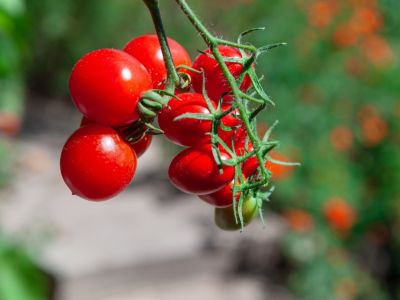If you can get your hands on currant tomato plants, they will reward you with sweet fruits, perfect for eating out of hand, canning, or preserving.
What Are Currant Tomatoes?
Currant tomatoes are tiny cherry tomatoes that grow on indeterminate vines. They produce all season long until frost kills the plants. The plants may get up to 8 feet (2.5 m.) tall and require staking to keep fruit exposed to light and off the ground. Each plant bears hundreds of small oval tomatoes that are similar to wild cherry tomatoes. The fruits are extremely sweet and filled with juicy pulp, which makes them perfect for preserves. There are several currant tomato varieties. White currant tomatoes are actually a light yellow in color. The red currant varieties produce pea-sized fruits. There are numerous cultivars of both types of currant tomato.
Currant Tomato Varieties
Sweet pea and Hawaiian are two sweet small red currant varieties. Sweet pea bears in about 62 days and the fruits are one of the tiniest of the currant tomato varieties. The Yellow Squirrel Nut currant is a wild tomato cross from Mexico with yellow fruits. White currants are a pale yellow in color and produce in 75 days. Other types of currant tomato include:
Jungle Salad Spoon Cerise Orange Red and Yellow Blend Gold Rush Lemon Drop Golden Rave Matt’s Wild Cherry Sugar Plum
The Sweet Pea and white are the most common types of currant tomato and seeds or starts are easy to find. The sweetest varieties are Sugar Plum, Sweet Pea, and Hawaiian. For a balanced flavor of sweet and tart, try Lemon Drop, which has a slightly tangy, acidity mixed with the sugary, sweet taste.
Growing Currant Tomato Plants
These tiny plants prefer well-drained soil in full sun. Currant tomatoes are related to the Mexican wild cherry tomato and, as such, can tolerate some of the hottest areas. The vines require staking or try growing them against a fence or trellis. Care of currant tomato plants is the same as any tomato. Feed the plants with fertilizer made for tomatoes. Water them frequently, especially once blossoms and fruit begin to set. Indeterminate plants will continue to grow until cold weather kills the vines.
